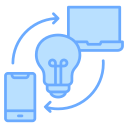This website uses cookies so that we can provide you with the best user experience possible. Cookie information is stored in your browser and performs functions such as recognising you when you return to our website and helping our team to understand which sections of the website you find most interesting and useful.

Innovative Technologies Shaping Remote Work
The evolution of remote work has been supported and accelerated by groundbreaking technological innovations, heralding a new era for professionals and organizations alike. These advancements have created seamless connectivity, improved collaboration, and ensured productivity across distributed teams. As the global workforce adapts to a more flexible and remote-centric approach, the role of technology continues to be front and center—reinventing how we communicate, manage projects, and maintain security. This exploration delves into the core innovations shaping our remote work experience, from advanced communication platforms to AI-powered tools and beyond, offering insights into how each technology is helping organizations not only maintain but thrive in a dispersed environment.
Next-Generation Communication Platforms
Virtual Meeting Experiences
Persistent Chat Spaces
Cross-Platform Integration

Artificial Intelligence Enhancements
Advanced Project Management Solutions

Cybersecurity Innovations for Remote Environments
Virtual Reality and Augmented Reality Solutions

Employee Well-Being and Productivity Tools
Digital Wellness Platforms



